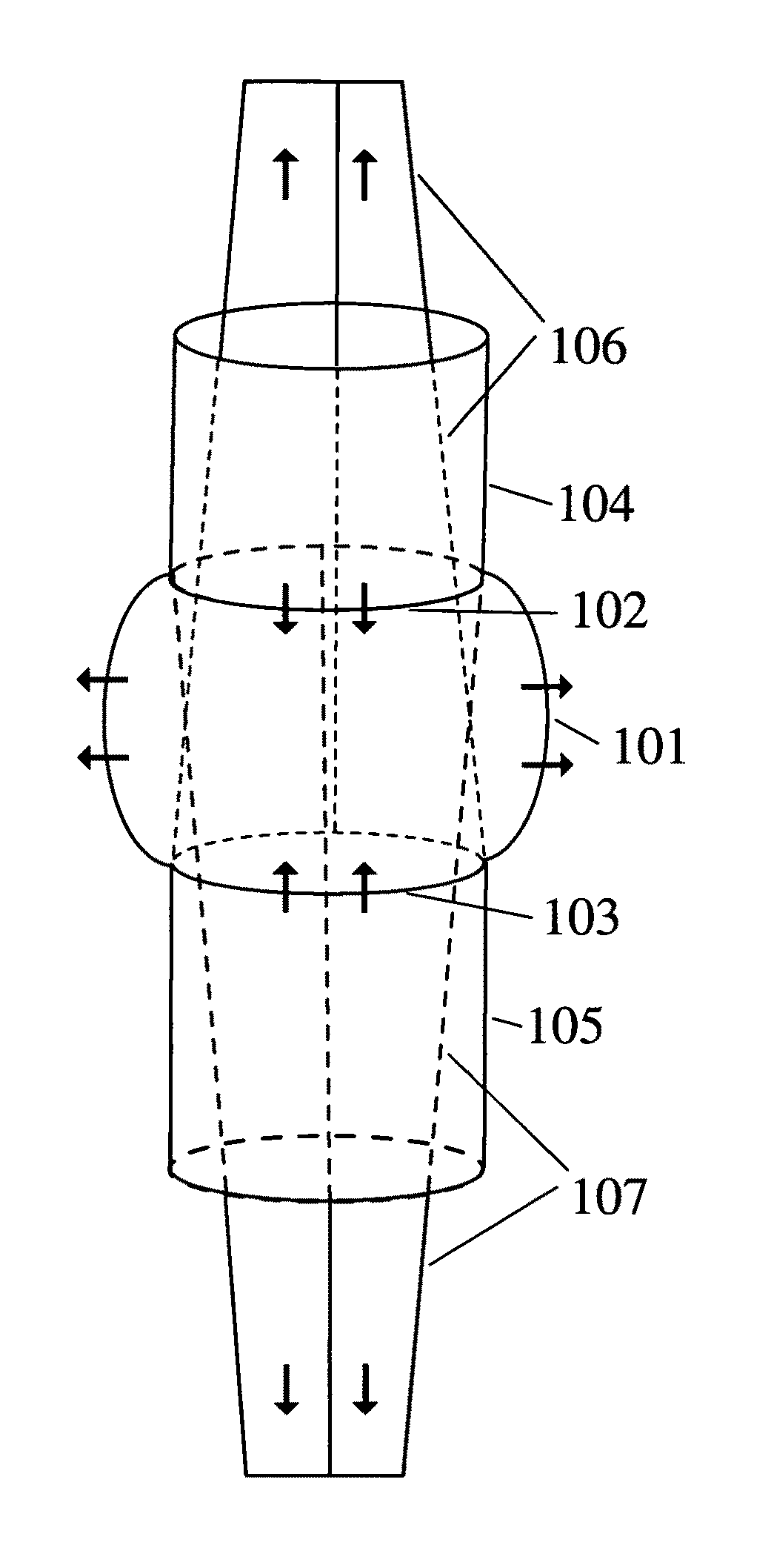Dental floss or tape whose cross-sectional size can be adjusted after insertion
a technology which is applied in the field of cleaning the interproximal spaces between teeth, can solve the problems of inefficiently small tools used to insert cleaning devices such as brushes, floss or tape that is sufficiently thin to insert into the narrow top of the space, and the time-consuming and cumbersome movement of floss back and forth in all these different angles, so as to reduce increase the cross-sectional size of floss or tape, and reduce the amount of tap
- Summary
- Abstract
- Description
- Claims
- Application Information
AI Technical Summary
Benefits of technology
Problems solved by technology
Method used
Image
Examples
Embodiment Construction
[0022]FIGS. 1 and 2 show one embodiment of this invention, but do not limit the generalizability of the claims. FIG. 1 shows a transparent side view of one embodiment of this invention before cross-sectional expansion. Specifically, the embodiment in FIG. 1 shows an outer sheath with a central segment 101 and two end segments, 104 and 105. This sheath is made of a flexible or compressible material which may be selected from the group consisting of nylon, PTFE, polyethylene, or another material. In variations on this embodiment, this outer layer may have a cross section which is basically flat or round, rather than oval-' shaped.
[0023]FIG. 1 shows two longitudinal strips, 106 and 107, that are partially enclosed by sheath (101, 104, and 105) and partially protrude out of the sheath. These strips may be made of material selected from the group consisting of nylon, PTFE, polyethylene, or another material. These two strips, 106 and 107, overlap within the central portion of the sheath 1...
PUM
 Login to View More
Login to View More Abstract
Description
Claims
Application Information
 Login to View More
Login to View More - R&D
- Intellectual Property
- Life Sciences
- Materials
- Tech Scout
- Unparalleled Data Quality
- Higher Quality Content
- 60% Fewer Hallucinations
Browse by: Latest US Patents, China's latest patents, Technical Efficacy Thesaurus, Application Domain, Technology Topic, Popular Technical Reports.
© 2025 PatSnap. All rights reserved.Legal|Privacy policy|Modern Slavery Act Transparency Statement|Sitemap|About US| Contact US: help@patsnap.com



